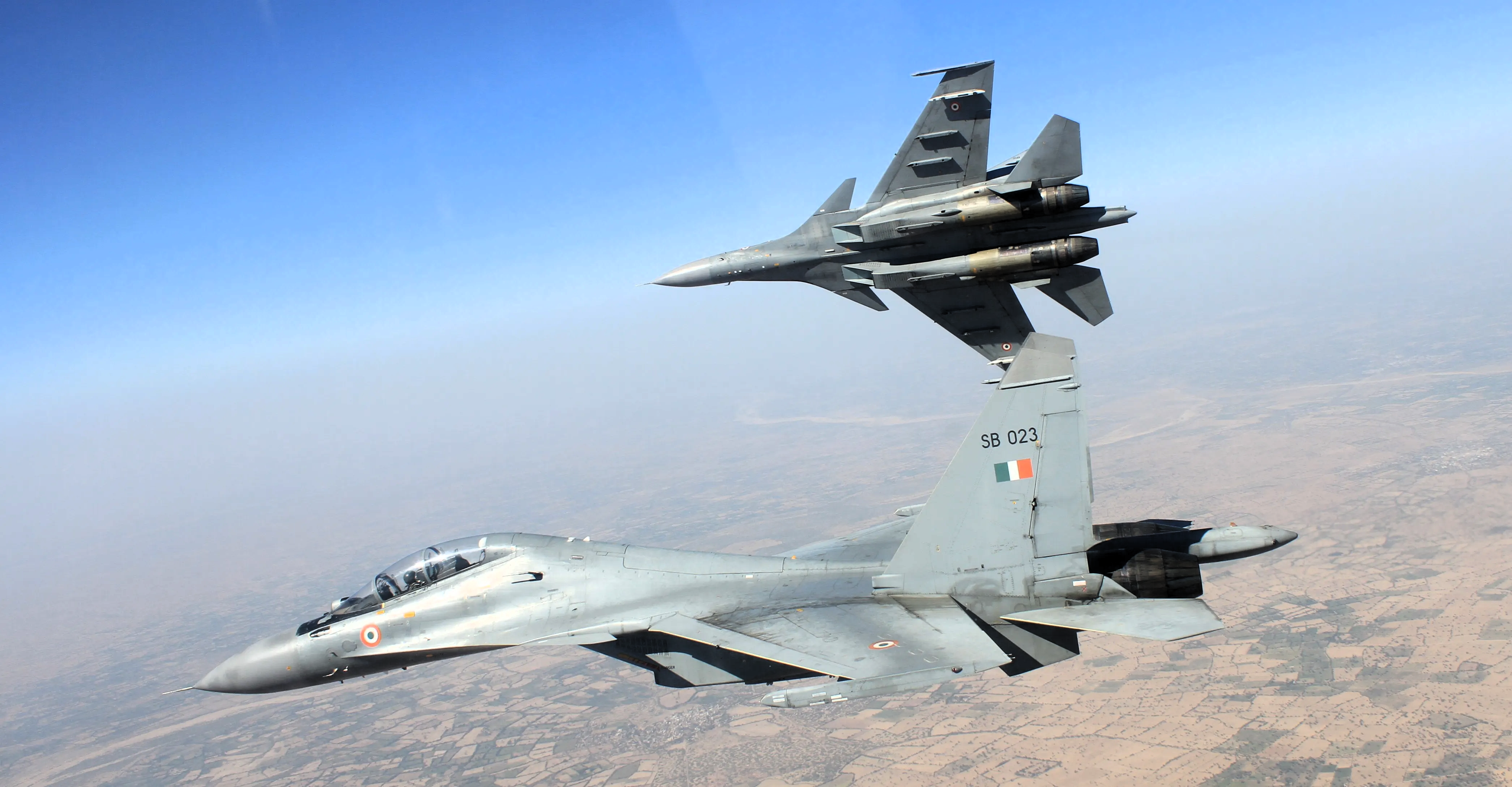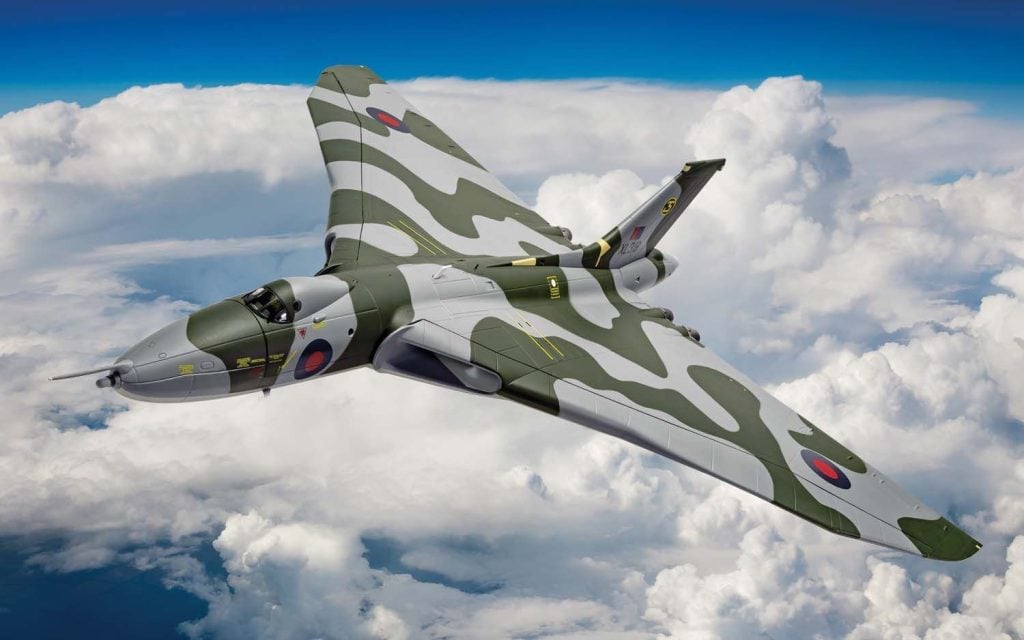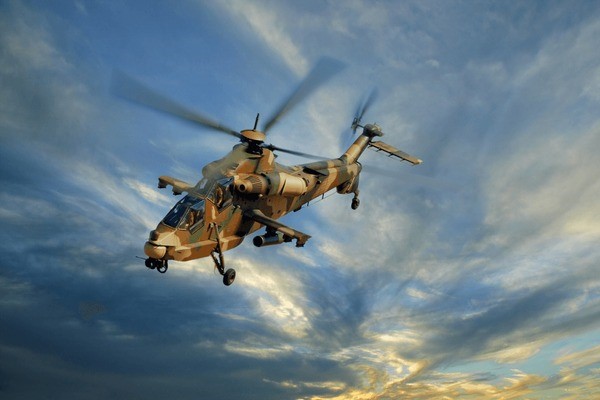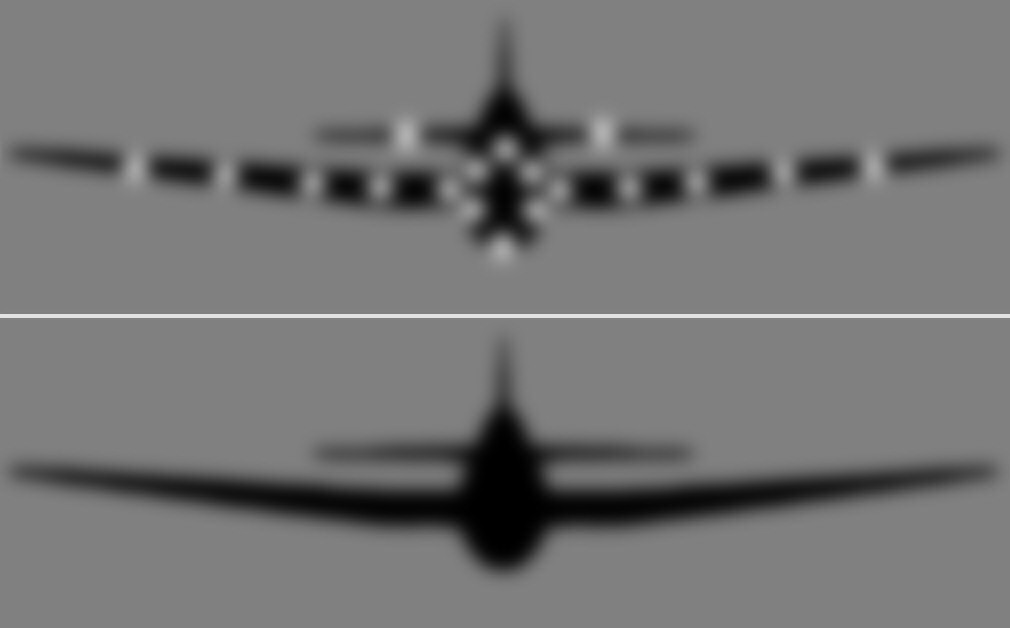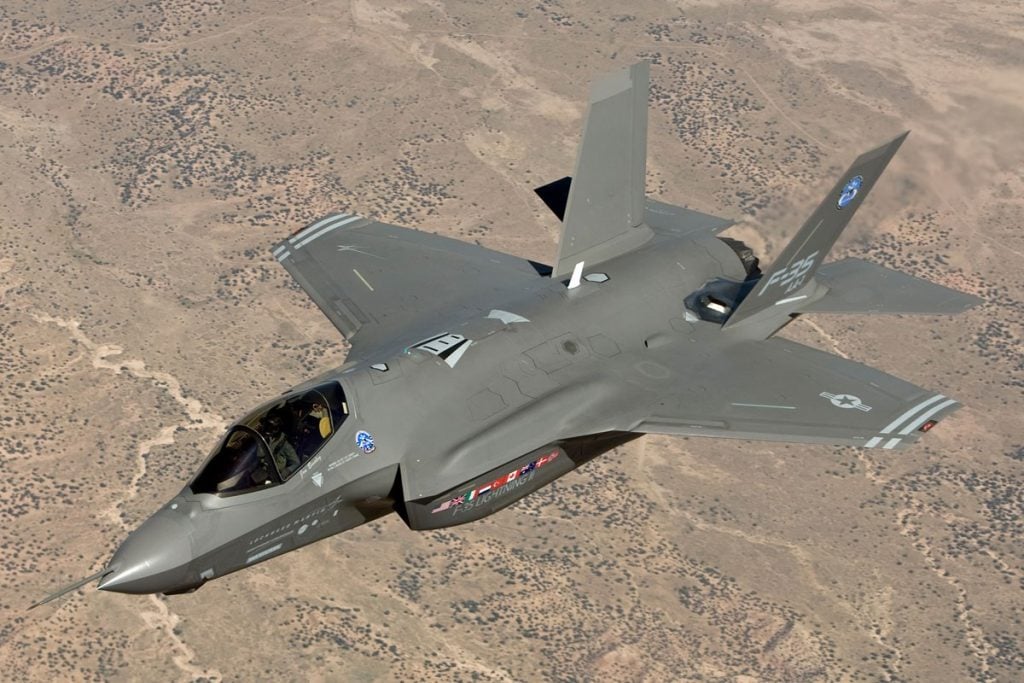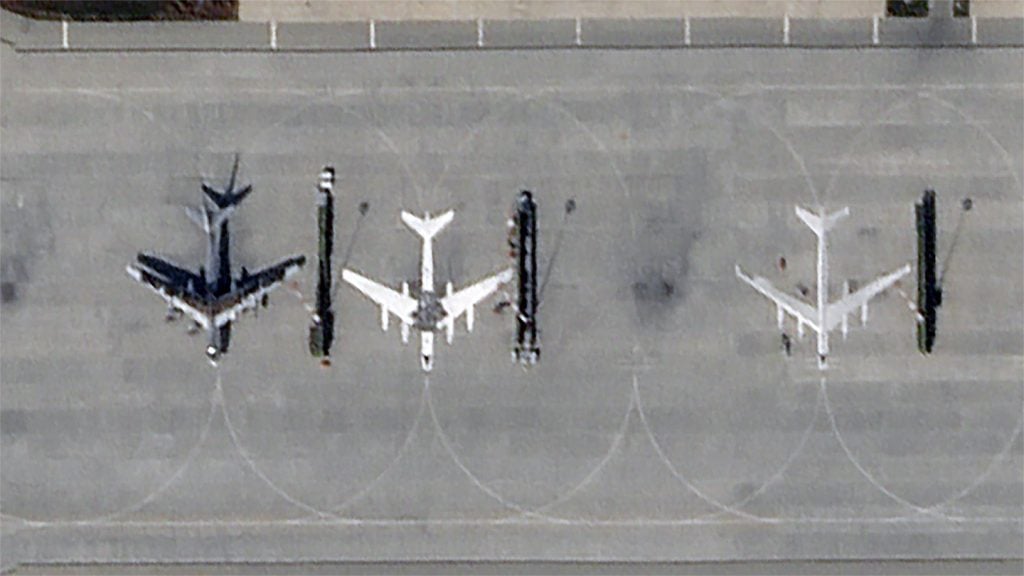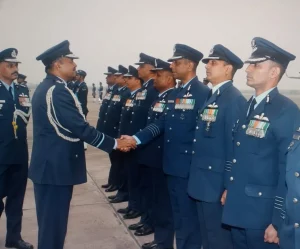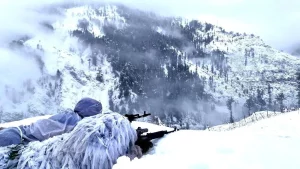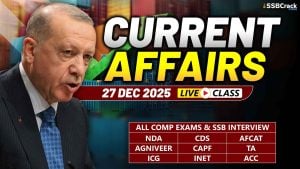In the high-stakes world of modern aerial warfare, the ability to evade detection is paramount. While the United States Air Force has long relied on the stealth capabilities of advanced fighters like the F-22 Raptor and F-35 Lightning II, the pursuit of camouflage has evolved far beyond the confines of radar-absorbing coatings. From innovative paint schemes to ingenious contrail-reducing systems, 5 Creative Ways US Jets Use Camouflage.
Also Read | Top 5 US Fighter Jets That Dominate the Skies with Speed
1. Ground Camouflage
One of the most enduring camouflage strategies employed by the US military is the use of ground-based paint schemes. Particularly prevalent on low-flying aircraft like helicopters, these camouflage patterns are designed to help the aircraft seamlessly blend into the surrounding environment, whether it’s the desert sands of the Middle East or the lush forests of Europe. By disrupting the silhouette and minimizing visual contrast, ground camouflage reduces the aircraft’s vulnerability to direct observation, making it harder for adversaries to spot and engage.
Adapting to the Operational Environment
During World War II, aircraft were often painted in colors and patterns tailored to the specific theater of operations. North African-based planes might sport desert-inspired camouflage, while those flying over the sea were adorned in shades of blue and gray. Over the skies of Europe, greens and browns were the order of the day, helping the aircraft disappear against the varied landscapes below.
The Continued Relevance of Ground Camouflage
While ground-based camouflage may be less common on modern fixed-wing aircraft, it remains a vital tool for low-altitude platforms like military helicopters. By blending seamlessly with the terrain, these aircraft can minimize their vulnerability to visual detection, a crucial advantage in environments where enemy forces may be on the lookout for airborne targets.
2. Active Camouflage
In the quest for ever-more-effective camouflage, the US military has also experimented with active systems designed to disrupt the distinctive silhouette of an aircraft. One such example is the Yehudi lights project, which the US Navy explored during World War II.
The Yehudi Lights Experiment
Inspired by the Canadian “diffused lighting” camouflage used on warships, the Yehudi lights project sought to blend aircraft with their background by using variable-brightness lights to alter the aircraft’s appearance. While the system proved successful in reducing the range at which the aircraft could be detected, it was ultimately rendered redundant by advancements in radar technology.
Reviving the Concept in Vietnam
Undeterred, the US Air Force revisited the concept of active camouflage during the Vietnam War, experimenting with Yehudi-like systems on its F-4 Phantom II fighters. However, these efforts were also ultimately abandoned as radar-based detection methods continued to evolve and improve.
3. Stealth Painting
One of the most significant advancements in aircraft camouflage has been the development of specialized radar-absorbing paints. These coatings, applied to cutting-edge stealth fighters like the F-22 and F-35, are designed to minimize the aircraft’s radar cross-section, making them harder to detect and track on enemy radar systems.
The Secrets of Stealth Coatings
The precise chemical composition of these radar-absorbing paints is closely guarded by the US government, with the details considered a national security secret. What is known, however, is that these specialized coatings play a critical role in the overall stealth capabilities of the aircraft, working in tandem with their aerodynamic design to reduce their vulnerability to detection.
Expanding the Stealth Advantage
The US has recently begun sharing its stealth coating technology with allies, such as allowing the Australian F-35 fleet to receive the same radar-absorbing paint as their American counterparts. This move underscores the strategic importance of these advanced camouflage systems and the desire to extend the stealth advantage to key partners in the global defense community.
Also Read | 5 US Aircraft and Their Role in Psychological Operations (PSYOPS)
4. Contrail Concealment
Even the most visually and radar-stealthy aircraft can be betrayed by the telltale signs of their passage, namely the contrails they leave in their wake. To address this vulnerability, the US military has developed specialized systems to minimize or even eliminate these visible indicators of an aircraft’s presence.
The B-2 Spirit’s Contrail-Reducing Capabilities
One of the most notable examples is the Northrop Grumman B-2 Spirit, a strategic bomber renowned for its ability to reduce the contrails it produces. By incorporating advanced design features and environmental control systems, the B-2 can maintain a low profile even in the skies, making it harder for adversaries to track its movements.
The Importance of Contrail Concealment
As the experiences of the Tonopah Test Ranges technician highlighted, contrails can often be the only visible clue to an aircraft’s presence, even when the plane itself is virtually undetectable. By mastering the art of contrail concealment, the US Air Force enhances the overall effectiveness of its stealth platforms, ensuring that they can operate with maximum efficiency and minimal risk of detection.
5. Decoy Aircraft
While the US military’s focus on camouflage has primarily revolved around airborne platforms, the threat of ground-based attacks has also necessitated the development of innovative deception tactics. One such strategy involves the use of painted decoy aircraft to confuse and mislead adversaries.
Protecting Airfields in Afghanistan
In the past, the US Air Force has been known to employ this technique at its airbases in Afghanistan, where painted decoys were used to create the illusion of a more formidable air presence than actually existed. While the effectiveness of these decoys is debated, the strategy reflects a broader effort to safeguard valuable assets against ground-based threats.
Lessons from the Russian Experience in Ukraine
The Russian Air Force’s struggles in the ongoing conflict in Ukraine have highlighted the vulnerability of aircraft to ground-based attacks, even for those with advanced stealth capabilities. In response, the Russian military has been observed painting unconvincing decoy aircraft on its airfields, a tactic that has drawn widespread ridicule but may nonetheless serve as a deterrent against Ukrainian drone strikes and other ground-based threats.
Also Read | What Airliner Horns Are For?
Conclusion
The evolution of aircraft camouflage in the US military is a testament to the ongoing pursuit of tactical advantage in the skies. From the timeless principles of ground-based concealment to the cutting-edge innovations in radar-absorbing paints and contrail-reducing systems, the US has developed a diverse arsenal of camouflage strategies to keep its airborne assets one step ahead of the enemy. As the nature of aerial warfare continues to evolve, the importance of these camouflage techniques will only grow, ensuring that the US Air Force remains a formidable force to be reckoned with.
FAQs
1. Why do military planes have camouflage?
Aircraft camouflage involves applying camouflage patterns to military aircraft to make them less visible, both on the ground and in the air.
2. What are the colors of military aircraft?
Military aircraft were initially painted in bright colors but later switched to gray for improved camouflage. There are varying opinions on aircraft paint, with some favoring bright colors and others preferring gray camouflage. The gray paint schemes were adopted to enhance concealment, particularly at high altitudes, where they reduced enemy visibility.
3. What is camouflage and concealment in the military?
Camouflage employs concealment and deception to enhance our offensive or defensive actions. It aims to surprise and mislead the enemy while preventing them from causing harm. Concealment involves hiding objects from sight, obscuring visibility, placing obstacles in the line of sight, and using deception and disguise.
4. Does the U.S. Air Force wear camo?
Air Force leaders have announced that the service will transition to a single combat utility uniform, adopting the Operational Camouflage Pattern (OCP), which is already used by the Army and Airmen in combat zones and various roles across the Air Force.
